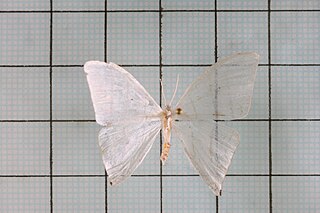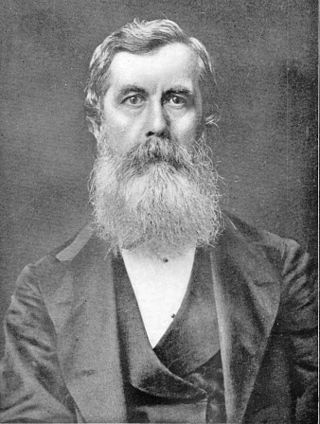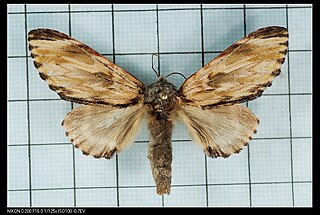
Digama is a genus of moths in the family Erebidae described by Frederic Moore in 1858. It is distributed in South Africa, China, throughout India, Sri Lanka, Myanmar and Australia.
Narosodes is a genus of moths in the family Erebidae erected by Frederic Moore in 1887.

Coarica is a monotypic moth genus of the family Noctuidae. Its only species, Coarica fasciata, is known from India, Thailand and China. Both the genus and species were first described by Frederic Moore in 1882.
Dunira is a genus of moths of the family Erebidae. The genus was erected by Frederic Moore in 1885.

Egnasia is a genus of moths of the family Erebidae. The genus was first described by Francis Walker in 1859.

Ditrigona is a genus of moths belonging to the subfamily Drepaninae. The genus was erected by Frederic Moore in 1888.

Tetragonus catamitus, the common butterfly moth, or Philippine callidulid moth, is a moth of the family Callidulidae. It was first described by Carl Geyer in 1832. Noted from Taiwan, north-eastern India, south-west India, the Andaman and Nicobar Islands, Sri Lanka, the Tenasserim Hills of Myanmar and from Java. They are day-flying moths that can be easily mistaken for a butterfly due to the position in which they hold their wings.

Frederic Moore FZS was a British entomologist and illustrator. He produced six volumes of Lepidoptera Indica and a catalogue of the birds in the collection of the East India Company.

Neopheosia is a monotypic moth genus of the family Notodontidae described by Shōnen Matsumura in 1920. Its only species, Neopheosia fasciata, was first described by Frederic Moore in 1888. It is found in the Himalayas, Taiwan, Sundaland, Buru and Japan.
Syntypistis fasciata is a moth of the family Notodontidae first described by Frederic Moore in 1879. It is found in Yunnan, China; Sikkim, India; Myanmar; and Java.
Eilema fasciata is a moth of the subfamily Arctiinae. It was described by Frederic Moore in 1878. It is found in Sri Lanka.

Gampola fasciata is a moth of the family Erebidae, described by Frederic Moore in 1878 from Sri Lanka.
Nudaria fasciata is a moth of the subfamily Arctiinae first described by Frederic Moore in 1878. It is found in Tibet and the Indian states of Sikkim and Assam.
Crocidophora fasciata is a moth in the family Crambidae. It was described by Frederic Moore in 1888. It is found in Darjeeling, India.
Egnasia ocellata is a moth of the family Noctuidae. It is found in Sri Lanka. Wingspan is 22mm. Body is dull red-brown color. Fore wing with traces of five waved lines angled below the costa. Reniform greyish with a dark center. Hind wing with traces of a dark antemedial band, on which is a black-centered grey spot on the discocellulars. Both wings are with lunulate marginal line. Underside of wings slightly suffused with grey.
Egnasia participalis is a moth of the family Noctuidae first described by Francis Walker in 1891. It is found in India and Sri Lanka. It has a 28 mm wingspan, a yellow-colored body and a forewing with the lunulate hyaline (glass-like) mark at the end of the cell. The outer lines of both wings are slightly sinuous. In the hindwing, the outer line rises from near the apex.
Laelia fasciata is a moth of the family Erebidae first described by Frederic Moore in 1883. It is found in Sri Lanka, India and Myanmar. One subspecies is recognized, Laelia fasciata rubripennisMoore, 1884.

Craniophora fasciata is a moth of the family Noctuidae first described by Frederic Moore in 1884. It is found in Sri Lanka, Japan, Korea, Taiwan, Thailand and Australia.









